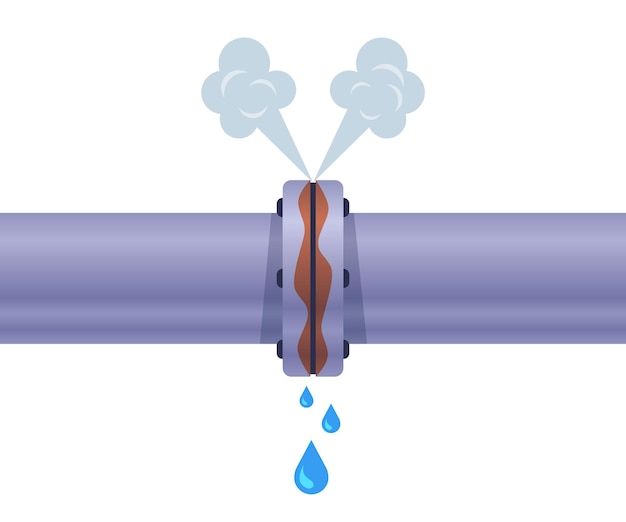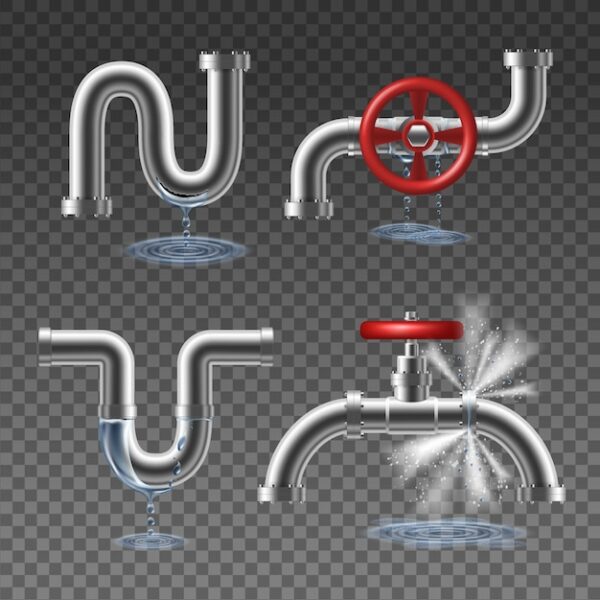Facing a burst pipe constitutes an emergency situation. Such damage can lead to significant harm not only to your home’s structure but also to your belongings. Pipes are particularly vulnerable to damage in extremely cold temperatures and during prolonged periods of freezing weather. Those located on exterior walls or in areas without heating are the most susceptible.
The repercussions of pipe damage can be expensive and cause major disruptions. However, with preventative steps, it’s possible to avert such issues. To assist you in navigating this challenge and minimizing the stress and inconvenience of dealing with a burst pipe, we’ve compiled a concise guide aimed at helping you protect your home.

Recommended reading: What To Do When Your Pipes Freeze
Burst pipes can be caused by a variety of issues, often leading to significant damage if not addressed promptly. Here’s a list of common causes:
Tree Roots and Ground Movement: Intrusive tree roots or natural shifts in the ground can disrupt pipe integrity, causing them to bend, move, or break.

Recommended reading: What To Do When Frozen Pipes Burst
After facing a burst pipe, you might think about installing top-quality underground water pipes to prevent future occurrences. Even homes in warmer areas with pipes exposed to the elements can suffer from burst pipes during colder spells. However, pipes don’t necessarily need extremely low temperatures to fail. Here are 10 strategies to safeguard your pipes throughout the year.
Pipes in basements, attics, or against exterior walls are at risk in cold weather, potentially freezing at or below 32℉. Ice formation inside a pipe leads to expansion and possible cracking. To avert this, insulate pipes with materials like fiberglass or foam. In a pinch, towels, newspapers, or plastic wrap can offer temporary protection against an unexpected cold.
Similar to an extension cord, heat tape wraps around pipes, using electricity to generate warmth and prevent freezing. This method is energy-efficient and can significantly reduce repair costs.
Improve insulation in colder parts of your home to protect pipes. Sealing leaks around windows and doors also helps maintain a warm enough environment to avoid pipe bursts.
Allowing faucets to drip slightly during freezing conditions prevents water from freezing inside the pipes due to the continuous movement. Begin with faucets furthest from the main water source to encourage flow throughout your plumbing.
To prevent freezing, open cabinet doors where pipes are located, especially those near the home’s exterior. This promotes warm air circulation. Use a space heater for extra warmth in particularly cold areas.
Keeping a consistent indoor temperature is crucial. Avoid turning off your heating system when away, and set it to a minimum of 55℉. This approach is cost-effective compared to the expenses of repairing burst pipes and water damage.
If you notice noises indicating pipe movement, consult a plumber to secure any loose pipes. This can prevent weakening and eventual breakage.
Check and maintain your water pressure within the ideal range of 30 to 50 psi to prevent pipe damage. A plumber can adjust the pressure or install a pressure-regulating valve if necessary.
Regular inspections can identify corroded pipes that need replacing to prevent bursts. Corrosion, which can be accelerated by hard water or certain bacteria, weakens pipes over time.
Installing freeze alarms and hot water circulating pumps helps monitor and adjust water temperatures, preventing vulnerable sections from freezing.
For immediate repair or advice, including selecting the best underground water pipes less susceptible to freezing, contact Vossler Plumbing Co. Our team is ready to address any concerns and provide expert guidance on preventing burst pipes. For further assistance or to book a service, reach out to us at 713-688-2304 today.
Whatever you’re experiencing, we have the technical expertise to help. Click below to share your information along with any specific details or photos, and we’ll be in touch with you as soon as possible with an estimate.